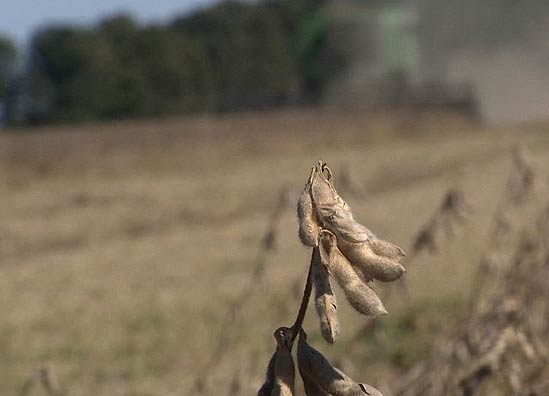One benefit of the increasing interest in where our food comes from is the resurgence of the American farmer. Invisible through much of the 20th century, this important player in our history is making a comeback. I say hoorah! There's a lot we can learn from our farmers.
I am proud to be part of this country's agricultural heritage. My family has been farming in America since the 1690s and my childhood memories of farm life are reflected in what I've created at the Moss Mountain Farm Garden Home. Farming culture taught me about the importance of family and community ties and stewardship of the land. I was recently reminded of this while attending the spring livestock show in Little Rock.
In Arkansas we have close to 50,000 farms and 13.8 million acres of farmland*. There aren't many degrees of separation between the people and farming here. Our three "king crops" are rice, cotton and soybeans. While rice is still our number one producer, soybeans hold their own. Almost 50% of our cropland is planted with soybeans, which contributes a billion dollars to our economy annually.

Soybeans are a relatively new crop for Arkansas. Early in the 20th century they were planted as a forage crop plus soybeans replenish nitrogen to the soil. Thanks to George Washington Carver, he discovered the value of soybean protein and soybean oil so then planting soybeans became more popular all over the U.S. However, it wasn't until after WW II that farmers here started taking them more seriously. The attraction? Soybeans are a low risk crop with a good return. They grow well without irrigation; are a useful rotation crop that adds nitrogen back to the soil; and don't require as much fertilizer as rice or cotton.
Right now we're in the middle of soybean planting season in Arkansas ? mid-April through the end of June. On a typical day farmers get out in the fields right after sunrise and come back in after 7 p.m. It's a 12 hour a day, 6 days a week job during planting season. I don't envy them the work. How about you?
As with any crop, timing the planting is important. Soybeans are day length sensitive. As soon as the required hours of darkness are reached the plants will begin to bloom. You can almost set your clock by it. Sow too late and the plants will be too spindly to support the blooms.
Back in the day farmers planted 'Larado' and 'Jupiter' soybeans. Today 'Maturity Group 4' soybeans are the norm. The name isn't as fun, but they produce more with less water and pesticides.
Throughout the fall farmers will be out in the fields harvesting. Soybeans are allowed to dry on the plant before harvest. Seed fields are left longer so the beans can go through cool autumn temperatures.
The next time you cook with vegetable oil or apply lip balm, think about the guy or gal who sowed the seed that grew into the plant that produced the soybean that made that product possible.

Talk Like a Soybean Farmer
Dry Land Acreage ? Fields without irrigation. Soybeans are better suited for dry land acreage than rice and cotton.
Maturity Group ? Based on latitudinal lines across the U.S., maturity groups indicate with a soybean will flower. The lower the group number (i.e. maturity group 4) the sooner the beans are harvested.
Plant Behind ? A crop that follows another when rotating crops. Farmers plant soybeans behind rice and cotton because soybeans add nitrogen to the soil and reduce the need for chemical fertilizers.
Seed Field ? Soybean crops planted for seed production. Usually planted later in the year so the beans can experience the colder fall temperatures.
*http://www.agclassroom.org/
drew barrymore bill o brien portland trailblazers will kopelman casey anthony leann rimes dakota fanning
No comments:
Post a Comment
Note: Only a member of this blog may post a comment.